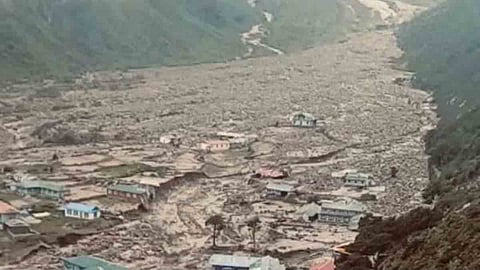

Kathmandu | The death toll from rain-triggered floodings and landslides across Nepal climbed to 125 on Sunday, police said.
Large swathes of eastern and central Nepal have been inundated since Friday, with flash floods reported in parts of the country.
According to the Armed Police Force sources, 64 people are missing in floods, landslides and inundation, while 61 people have been injured.
The Kathmandu Valley reported the highest number of deaths.
At least 322 houses and 16 bridges were damaged. The security personnel have rescued nearly 3,626 people, the Armed Police Force sources said.
The sources added that rescue operations were still underway.
Eyewitnesses said they had never seen such a devastating flood and inundation in the Kathmandu Valley in 40-45 years.
The death toll has reached 125, the Armed Police Force said in a statement.
At least 19 people were killed on Saturday when a bus was buried in a landslide in Dhading district bordering Kathmandu. Five people died when a house collapsed under a landslide in the city of Bhaktapur.
Six football players were also killed in a landslide at a training centre operated by the All Nepal Football Association in Makwanpur. Others have been swept up in the floodwaters.
Despite the forecast for rain to continue until Tuesday, there were signs of some easing on Sunday.
“I’ve never before seen flooding on this scale in Kathmandu,” said Arun Bhakta Shrestha, Climate and Environmental expert at the International Centre for Integrated Mountain Development (ICIMOD).
Kathmandu's main river, the Bagmati, was flowing above danger levels after incessant rain lashed much of eastern and central Nepal on Friday and Saturday, a report published by ICIMOD said.
A low-pressure system in the Bay of Bengal and the more northerly than usual position of the monsoon trough was the reason behind Saturday's exceptionally intense rain, it said.
Scientists say that while climate change is changing the amount and timing of rainfall across Asia, a key reason for the rise in the impact of floods is the built environment, including unplanned construction, especially on floodplains, which leaves insufficient areas for water retention and drainage.
The floods and landslides have thrown life out of gear in many parts of the country, with many highways and road stretches disrupted, hundreds of houses and bridges buried or swept away, and hundreds of families displaced.
Thousands of passengers have been stranded in various places due to road disruption.
